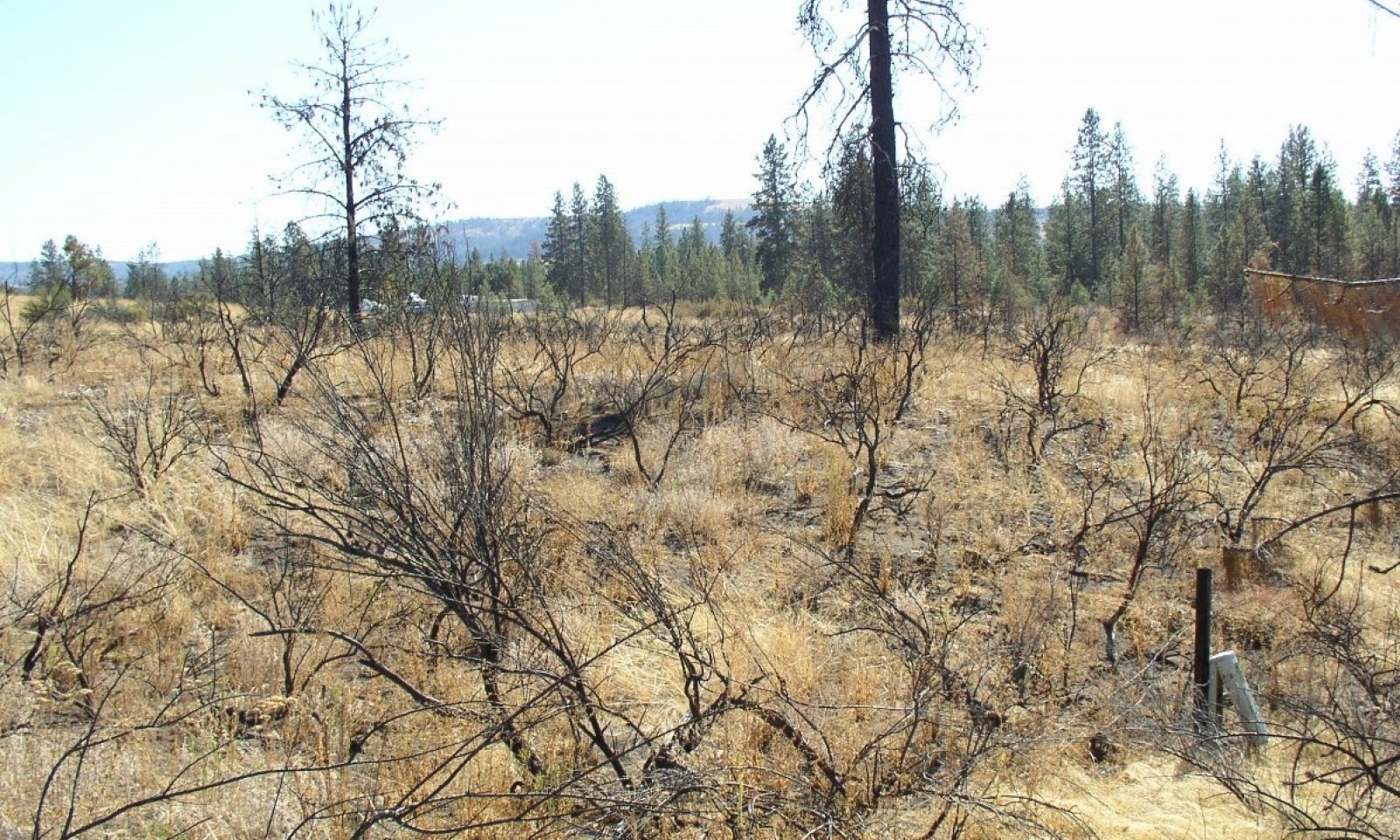
Dry, Warm, Hill Slopes and Valleys (Ponderosa Pine Dry Shrub and Grass) Pinus ponderosa / Purshia tridentata – Festuca idahoensis - Pseudoroegneria spicata
Scenario model
Current ecosystem state
Select a state
Management practices/drivers
Select a transition or restoration pathway
- Transition T1A More details
- Transition T1B More details
- Transition T1C More details
- Restoration pathway R2A More details
- Restoration pathway R3A More details
-
No transition or restoration pathway between the selected states has been described
Target ecosystem state
Select a state
Description
This state can have highly variable plant cover depending on fire disturbance. With frequent ground fire every 7-10 years the reference plant community will be a pine/grass savanna with bunchgrasses dominating with scattered pine. In variable mixed severity fires a patchy mosaic of pine stands with open areas of bitterbrush will be the norm. With fire exclusion a medium to dense multi-story ponderosa pine woodland will develop creating an alternative state. Past human disturbance has allowed introduced annual and perennial grasses to establish and mix into the natural cover sometimes out competing the native vegetation causing an alternative state.
Ponderosa pine is the only tree species. Antelope bitterbrush is the major shrub species with kinnikinnick, snowbrush ceanothus, spirea, snowberry, and sagebrush in minor amounts depending on location and moisture. Idaho fescue and bluebunch wheatgrass dominate the grass component with varying amount of geyer’s sedge, needle and thread grass, blue wildrye, and rough fescue.
Forest productivity is measured using site index (SI) and culmination of annual increment (CMAI). Ponderosa pine is the only tree species and site indexes ranges greatly depending on local site characteristics. NRCS forest site index plots taken throughout MLRA 430 shows this variability. Site index ranges from 60 – 107. Average site index for this ecological site will be 75 – 80 feet using Meyers 100 year total age table. Using the average SI CMAI would be 66 cubic feet/acre/year at 40 years of age in a fully stocked stand.
Forage production estimates from NRCS Range 5 Plots in Okanogan County in Ponderosa pine / antelope bitterbrush sites are as follows based on overstory tree canopy. Forage production figures are in pounds/acre for all vegetation below 4.5 feet (grass, sedges, forbs, shrubs, tree regeneration):
Overstory tree canopy – Forage production
0 – 20% - 800 to 1400 lbs/ac
20 – 40% - 300 to 650 lbs/ac
The bulk of the grass production is bluebunch wheatgrass and Idaho fescue. Other grass species include needle and thread grass, prairie junegrass, rough fescue, pine grass and big bluegrass. The most prominent forbs are lupine, basalmroot, pussytoes, hawkweed, and yarrow. The most prominent shrub is bitterbrush. Other shrubs include currant, snowbrush ceanothus, big sagebrush, rabbitbrush, and buckwheat. Tree regeneration included mostly ponderosa pine with an occasional Douglas-fir.
Submodel
Description
Fire exclusion for over 50 years allows ponderosa pine stands to dominate cover and form multi-aged medium to dense woodlands. In most cases mixed severity to stand replacing fires will not revert site back to a pine/savanna condition in State 1.
Submodel
Description
The plant composition in this state is variable with cool season introduced grasses encroaching from adjacent homesteads and pastures. One annual species of special note that can cause a drastic shift in grass species is cheat grass (Bromus tectorum). It invades from overgrazed or heavily disturbed pastures and can out compete the native bunchgrasses changing to a shrub/cheatgrass site.
Submodel
Mechanism
Natural fire regime interval stopped through fire prevention allowing pine to dominate site overtopping bitterbrush. Site converted to forest/woodland condition without the natural reoccurring fire regime.
Mechanism
Introduced non-native grasses invade site over the years of human habitation. Native grasses cannot compete with these grasses especially when heavily grazed for many years.
Mechanism
Heavy overstory thinning followed by reoccurring understory prescribed burning to return to pine/grass savanna state.
Model keys
Briefcase
Add ecological site groups and Major Land Resource Areas to your briefcase by clicking on the briefcase (![]() ) icon wherever it occurs. Drag and drop items to reorder. Cookies are used to store briefcase items between browsing sessions. Because of this, the number of items that can be added to your briefcase is limited, and briefcase items added on one device and browser cannot be accessed from another device or browser. Users who do not wish to place cookies on their devices should not use the briefcase tool. Briefcase cookies serve no other purpose than described here and are deleted whenever browsing history is cleared.
) icon wherever it occurs. Drag and drop items to reorder. Cookies are used to store briefcase items between browsing sessions. Because of this, the number of items that can be added to your briefcase is limited, and briefcase items added on one device and browser cannot be accessed from another device or browser. Users who do not wish to place cookies on their devices should not use the briefcase tool. Briefcase cookies serve no other purpose than described here and are deleted whenever browsing history is cleared.
Ecological site groups
Major Land Resource Areas
The Ecosystem Dynamics Interpretive Tool is an information system framework developed by the USDA-ARS Jornada Experimental Range, USDA Natural Resources Conservation Service, and New Mexico State University.
